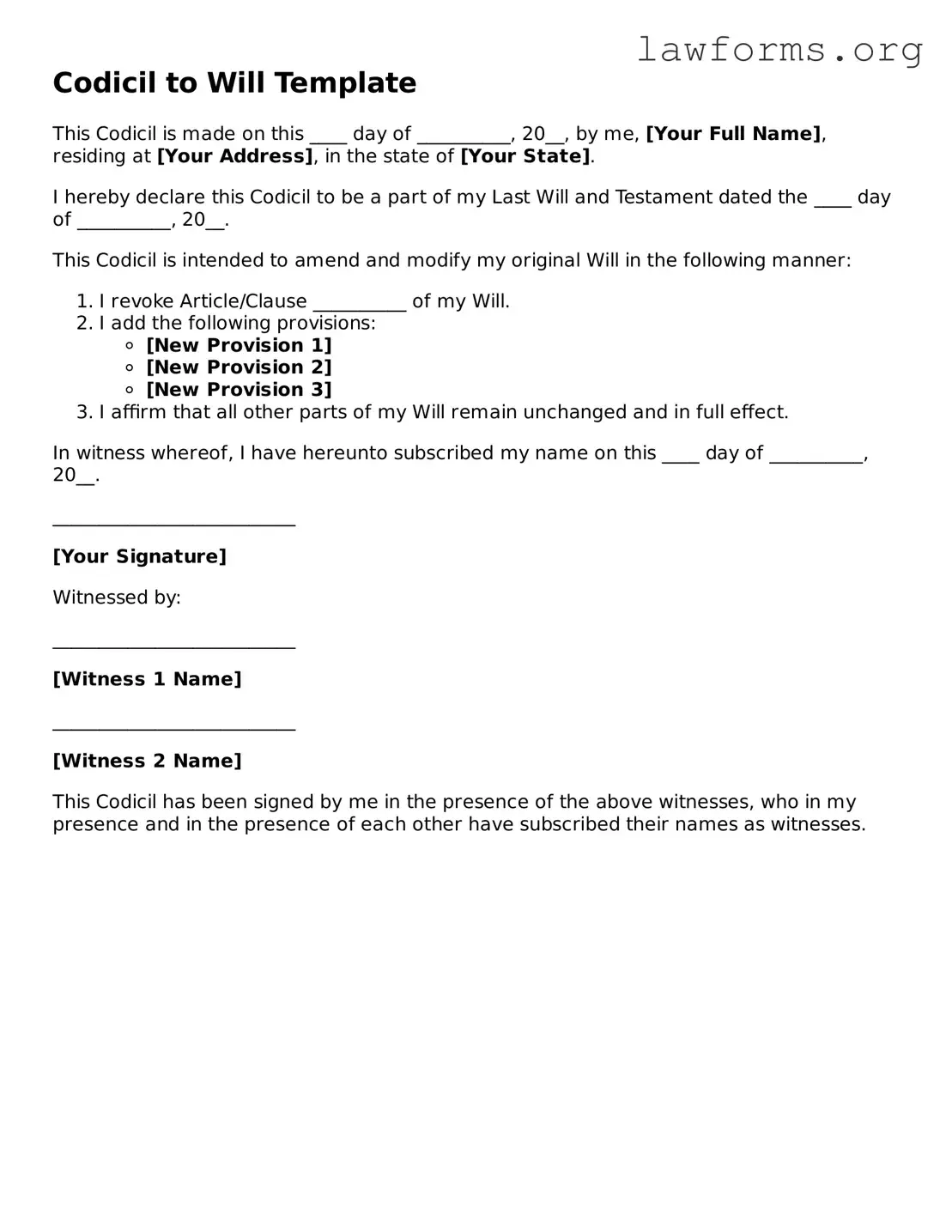Valid Codicil to Will Form
A Codicil to Will form is a legal document that allows an individual to make amendments to an existing will without having to rewrite the entire document. This form can clarify, add, or revoke provisions in the original will, ensuring that the testator's wishes are accurately reflected. For those looking to update their estate plans, filling out this form is a straightforward way to ensure that changes are legally recognized.
Start updating your will today by filling out the form below.
Customize Document Online
